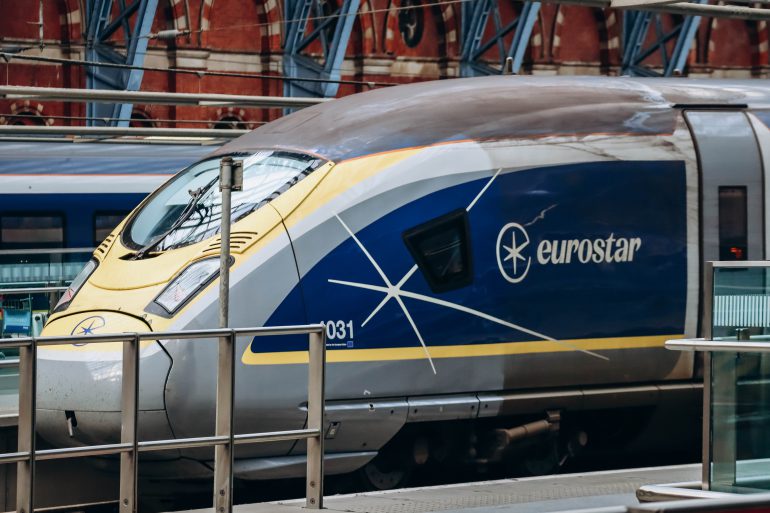The Eurostar route between Amsterdam/Rotterdam and London will not operate for six months, between June 2024 and early 2025. The announcement was made on 24 November after several months of negotiations, which started in the summer, between NS, Eurostar, infrastructure provider ProRail and the Dutch government. Initially, the interruption was contemplated to last for eleven or twelve months, but it was later halved after some temporary solutions were devised. In order for passengers to make the trip during the disruption, they will have to travel from Amsterdam to Brussels and then take a connecting train to London.
This is all due to the plans to renovate Amsterdam Centraal station, an ambitious overhaul that will cost around a billion euros, according to newspaper Het Parool. The Eurostar route will not operate because of the expansion works of the international terminal, which won’t allow for the processing (passport, customs and luggage checks) of passengers traveling to London, a procedure that has become more difficult following Brexit. Theoretically, Rotterdam, which is also on the route, could also serve as a starting point for travellers to the UK. However, a train service that does not start in Amsterdam would not be profitable for Eurostar, and thus the whole stretch to Brussels will be out of operation.
In a recent statement, the NS said that ‘despite all efforts, there will be a period in which there will be no direct train to London from Amsterdam,’ and added that ‘the new, large terminal will be ready from January 2025 and we will have the opportunity to allow many more travellers to travel directly from Amsterdam to London. In this way, we make Eurostar an even more attractive alternative to the plane for many more travellers.’ After the renovation, the expanded Eurostar terminal will have room for 650 passengers, more than twice the current space, which can accommodate 250 passengers.
When the disruption starts, passengers departing from Amsterdam or Rotterdam will have to take a connecting train in Brussels in order to reach London. However, the service will only change for the Amsterdam-London route; the opposite route from London to Amsterdam will continue normally, since passport controls are done in the UK. This means that Eurostar trains will actually run empty for the Amsterdam to Brussels stretch of the trips.
It could have been worse, however. Last June, State Secretary for Infrastructure and Water Management Vivianne Heijnen announced that the high-speed route between Amsterdam and London would not run for up to eleven months. Plans to set up a temporary terminal for custom inspections made it possible to shorten the disruption period to half the initial expected period. Eurostar Group Chief Executive Gwendoline Cazenave sees this as a positive outcome, given the circumstances: ‘We are pleased that the discussions have shortened the gap in services between Amsterdam and London from twelve to six months and we continue to work on reducing the inconvenience for passengers, local residents and the economy of Amsterdam and surrounding areas.’
The direct Eurostar train between Amsterdam and London was inaugurated in October 2020, amidst the Covid pandemic, and helped passengers save an hour of passport controls in Brussels, the only possible route until that moment. According to the UK’s The Independent, the Amsterdam-London route is the fastest-growing of all Eurostar’s InterCity routes. It currently produces 80% less CO2 emissions per passenger compared to flying between both cities, as The Guardian reported. This is a point that the NS statement comments on, highlighting that the disruption is ‘very disappointing because we have worked hard in recent years to make the Eurostar to London an attractive alternative to the plane. It is a particularly difficult puzzle to solve. If there had been a simple solution, all parties would have seized it with both hands. Unfortunately, after various investigations, that simple solution appears not to exist’.
Written by Juan Álvarez Umbarila
